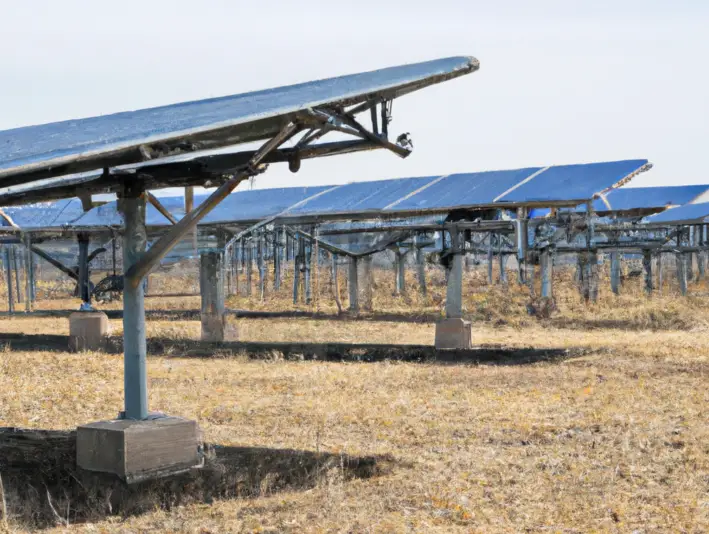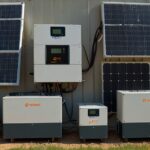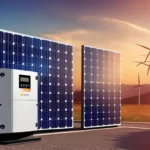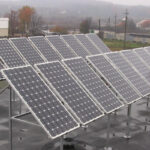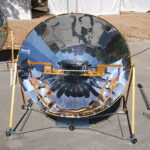If you’re considering installing a solar panel system, one of the key decisions you’ll need to make is choosing the right mounting option. One popular choice is a ground mount solar racking system, which provides a range of benefits over other types of mounts. In this article, we’ll take a detailed look at what exactly a ground mount solar racking system is, its types, the advantages it provides, how to choose the right one, installation tips, and much more.
Read on to learn everything you need to know about ground mount solar racking systems
What is a Ground Mount Solar Racking System?
A ground mount solar racking system is a type of mounting structure designed to hold solar panels on the ground. Unlike rooftop mount systems, which are installed on top of an existing roof, ground mount systems are mounted directly onto the ground. They typically consist of a series of rails or supports that are anchored into the ground using concrete or other materials. Once the mounting structure is in place, the solar panels are attached to the rails or support using mounting brackets.
Advantages of a Ground Mount Solar Racking System
There are many advantages to using a ground mount solar racking system over other types of mounts. For starters, they are easier to install and maintain than rooftop mounts.
Since they are installed on the ground, there’s no need to climb up on a roof to install or repair them. Ground mount systems are also typically more space-efficient since they can be installed in areas with more open space and less shade than rooftops. This means that you can often install more panels on a ground mount system than you could on a rooftop mount.
Ground-mount solar racking systems are also more versatile than rooftop mounts. They can be installed on all types of terrain, including sloped or uneven ground, and can be oriented in any direction to maximize solar exposure. Additionally, since ground mount systems are not attached to the roof, they pose less risk of damage to the structure of the building.
Types of Ground Mount Solar Racking Systems
Adjustable Ground Mount Solar Racking
Adjustable ground mounts solar racking systems are designed to provide flexibility in terms of the tilt angle and orientation of solar panels. This system is ideal for installations on uneven terrain, as it allows for adjustments to be made to the angle of the panels. This ensures maximum energy production by allowing the panels to capture the most sunlight throughout the day. These systems are designed to withstand extreme weather conditions, ensuring durability and longevity.
The benefits of using adjustable ground mount solar racking systems are numerous. Firstly, they are incredibly versatile, making them ideal for installations on uneven terrain. Secondly, they allow for adjustments to be made to the angle of the panels, maximizing energy production. Thirdly, they are designed to withstand extreme weather conditions, ensuring durability and longevity. Finally, they are easy to install and maintain, making them an attractive option for many solar energy users.
Ballasted Ground Mount Solar Racking
Ballasted ground mount solar racking systems are another popular type of solar racking system. They are designed for installations where it is not possible to penetrate the ground, such as on a rooftop. This system uses weights to hold the panels in place and ensure stability. The ballasts can be made from a variety of materials, including concrete, steel, or water-filled containers. The weight of the ballast depends on the size and number of panels, as well as the wind and snow loads of the installation site.
The benefits of using ballasted ground mount solar racking systems are numerous. Firstly, they are ideal for installations where it is not possible to penetrate the ground. Secondly, they are highly stable, ensuring that the panels remain secure, even in high winds. Thirdly, they are easy to install and maintain, making them an attractive option for many solar energy users.
Pile-Driven Solar Racking
Pile-driven solar racking systems are designed for installations on flat ground or terrain that is relatively level. This system uses piles that are driven into the ground to support the solar panels. The piles are made from various materials, including steel, aluminum, or composite materials, and are designed to withstand the weight of the panels and any external forces, such as wind and snow.
The benefits of using pile-driven solar racking systems are numerous. Firstly, they are highly stable, ensuring that the panels remain secure, even in high winds. Secondly, they are ideal for installations on flat ground or terrain that is relatively level. Thirdly, they are easy to install and maintain, making them an attractive option for many solar energy users.
Hybrid Systems
Hybrid solar racking systems combine the features of different systems to provide both flexibility and stability. For example, some systems use a combination of adjustable and ballasted systems to provide both flexibility and stability. Hybrid systems can be highly customized to meet the specific needs of each installation, making them an attractive option for many solar energy users.
Factors to Consider When Choosing a Ground Mount Solar Racking System
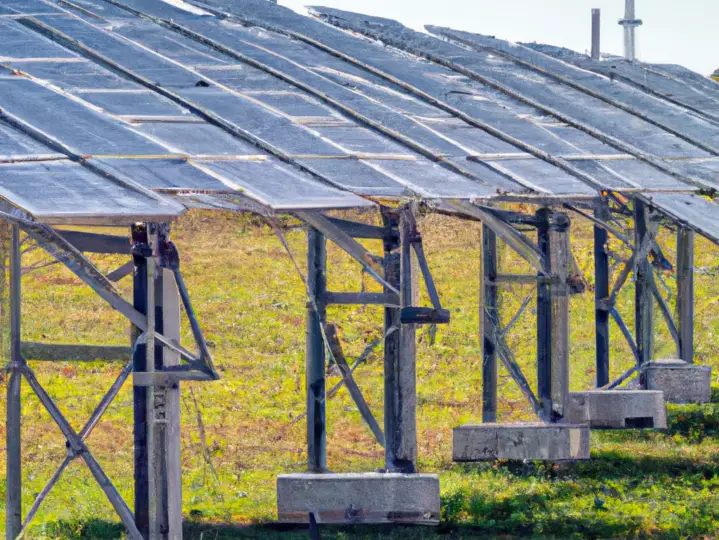
Here are the factors to consider when choosing a ground mount solar racking system, presented in a listicle format:
- Climate and terrain: The first and foremost factor to consider is the climate and terrain of the location where the system will be installed. The racking system should be able to withstand high winds, heavy snowfall, and other harsh weather conditions. Additionally, if the terrain is uneven or sloping, the system should be designed accordingly.
- Size and type of solar panels: The second factor to consider is the size and type of solar panels that will be used in the system. The racking system should be compatible with the panels and be able to hold them securely in place.
- Orientation of the system: The orientation of the system is another important factor to consider. The racking system should be installed in a location that receives maximum sunlight throughout the day. The angle and direction of the panels should be optimized for the best solar exposure.
- Budget: The cost of the system is another important consideration. The racking system should be affordable and should fit within your budget. The total cost should include installation, maintenance, and upkeep.
Installation Process and Tips for Ground Mount Solar Racking System
- The installation process involves preparing the site, installing the mounting structure, attaching the solar panels, and connecting the system to the power grid.
- Site inspection is necessary to assess soil, terrain, and solar exposure suitability for the system.
- The mounting structure is installed using concrete or other materials.
- Solar panels are attached to the mounting structure using mounting brackets.
- The system is connected to the power grid to complete the installation process.
- Proper installation is critical for the system’s long-term success and performance.
- Choosing the right type of mounting structure for the environment is important.
- Ensuring that the installation site is flat and level can prevent future issues.
- Taking steps to prevent damage from natural elements is necessary.
- Orienting the system to maximize solar exposure and angling the panels properly can increase energy production.
- Securing the system to the ground using appropriate materials and techniques is necessary.
- Following local codes and regulations ensures the system’s safety and compliance.
Maintenance and Upkeep of a Ground Mount Solar Racking System
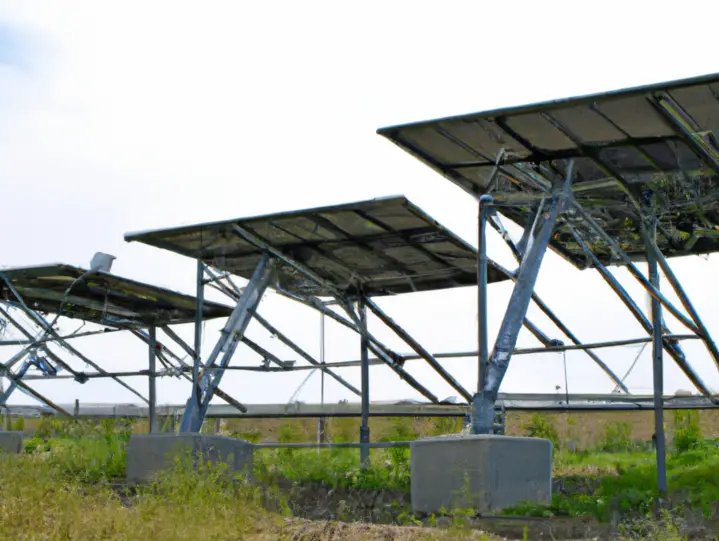
Like any solar racking system, ground mount solar racking systems require regular maintenance and upkeep to ensure optimal performance and longevity. This typically includes regular cleaning of the solar panels to remove dirt and debris, as well as regular inspection and repair of the mounting structure and wiring.
Additionally, ground mount solar racking systems may require periodic adjustments to ensure that they remain properly oriented and angled. It’s also important to monitor the system’s performance and output to detect any issues or problems early on. By taking these steps, you can help ensure that your ground mount solar racking system continues to operate safely and efficiently for years to come.
Cost Comparison with Other Solar Panel Mounting Options
When it comes to choosing a solar panel mounting option, comparing costs is an important factor to consider. In order to get an accurate cost comparison, you need to take into account both the upfront installation costs and the long-term maintenance and upkeep expenses. While ground mount systems generally cost more to install than rooftop mounts, they usually require less maintenance and have a longer lifespan, making them a more cost-effective choice in the long run.
Ground mount solar racking systems also have the potential to offer a greater return on investment over time, as they can be installed in areas with more solar exposure and greater energy output potential. This means that you may be able to generate more energy and save more money on your energy bills with a ground mount system.
However, it’s important to note that the cost comparison between ground mount systems and other mounting options will ultimately depend on the specific type of system you choose, as well as your individual needs and requirements. For example, if you have limited space on your property, a rooftop system may be the more practical choice. Therefore, it’s important to carefully consider your options and consult with a professional before making a decision.
Environmental Impact of Ground Mount Solar Racking Systems
One of the key benefits of ground mount solar racking systems is their positive impact on the environment. By generating clean, renewable energy from the sun, these systems help reduce our reliance on fossil fuels and reduce greenhouse gas emissions. Additionally, ground mount systems can be installed on open land that might otherwise go unused, helping to conserve natural habitats and promote biodiversity. By choosing a ground mount solar racking system for your property, you can make a positive impact on the environment while also saving money on your energy bills.
Overall, ground mount solar racking systems offer a range of benefits and advantages over other types of solar panel mounts. From their space-efficient design and versatility to their ease of installation and minimal maintenance requirements, ground mount systems make an excellent choice for many property owners. If you’re considering installing a solar panel system, be sure to research the different types of mounts available and choose the one that best meets your needs and requirements.
Conclusion
Ground-mounted solar racking systems are essential for providing a strong, durable, and flexible support structure for solar panels. Each type of system has its own benefits and is designed to meet specific needs. When choosing a ground-mounted solar racking system, it is important to consider factors such as the terrain, wind and snow loads, installation site, and budget. By selecting the right system, solar energy users can ensure that their solar panels are secure, durable, and efficient.

